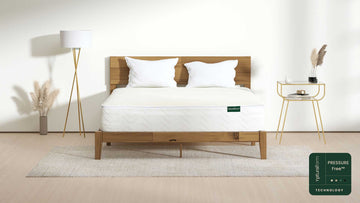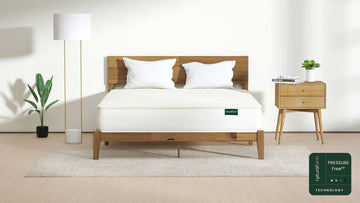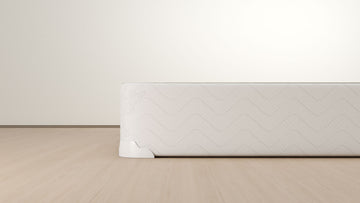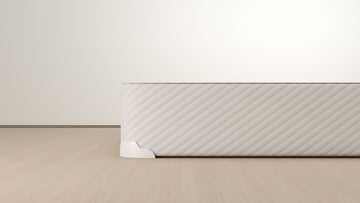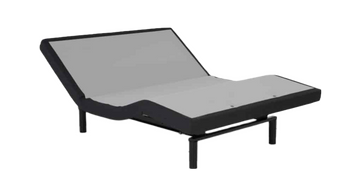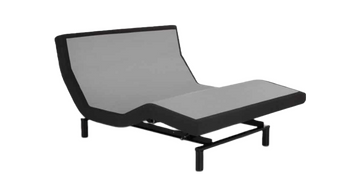A thick, plush mattress is a dream to climb into. The multiple layers provide unparalleled comfort and support, and tend to be longer lasting. But how thick should a mattress be to achieve that dreamlike sleep?
A mattress can range anywhere in thickness between 6-20 inches. Most people prefer to have a mattress thickness in the 10-16 inches range.With so many height profiles available it can be tricky to sort out what the thickness means, and what might be best for you. So to help you find your sweet spot, we’ve put together some info to demonstrate the relationship between mattress thickness and sleep quality.
How to assess mattress thickness
First things first, you need to understand the structure of the mattress that’s making it, well, thick. A mattress is comprised of two to five layers.
You have the foundational layers, which include the base and mattress technology. The foundational layers in a high quality mattress should comprise about half of the overall mattress thickness. If the mattress has a foundation layer of less than 5 of the 10 inches, it probably won’t last very long because of insufficient foundational support.
Your comfort layers often consist of a dedicated comfort layer(s), and support layer(s). These layers provide additional support for your body, usually contouring foams of different shapes and densities. These pressure relieving layers are what makes a mattress feel plush. Look for a mattress with comfort layers that are at least 2 inches thick. More than that will be up to your support and comfort preferences, which we will discuss further on.
How thick should a mattress be?
A mattress that is too thin will not provide adequate pressure relief or support. If you have a heavier body, a thin mattress that you sink too far into will have you encounter the uncomfortable and firmer foundational layers.
This is why most high quality mattresses that you encounter will not measure any less than 10 inches in thickness. The structure of anything less than that will have a very short lifespan and most likely not yield enough support. The sweet spot tends to be in the 10-12 inch range.
You might be wondering if there’s such a thing as too thick of a mattress? There is! If you have comfort layers so thick that a mattress is 16-20 inches, you might not even sink far enough to those support layers to experience their pressure relieving benefits.
Factors that affect mattress thickness
Bodyweight
Couples
Health and medical conditions
Mobility issues
Temperature control
Typically, a thicker mattress will trap more air and heat throughout the night. That isn’t usually the case in high quality mattresses that feature cooling properties like wool, gel-infused foam, and cut foam designs that increase airflow.
If you find a thicker mattress that you love, double check that is has sufficient cooling properties so that you aren’t waking up hot night after night.
